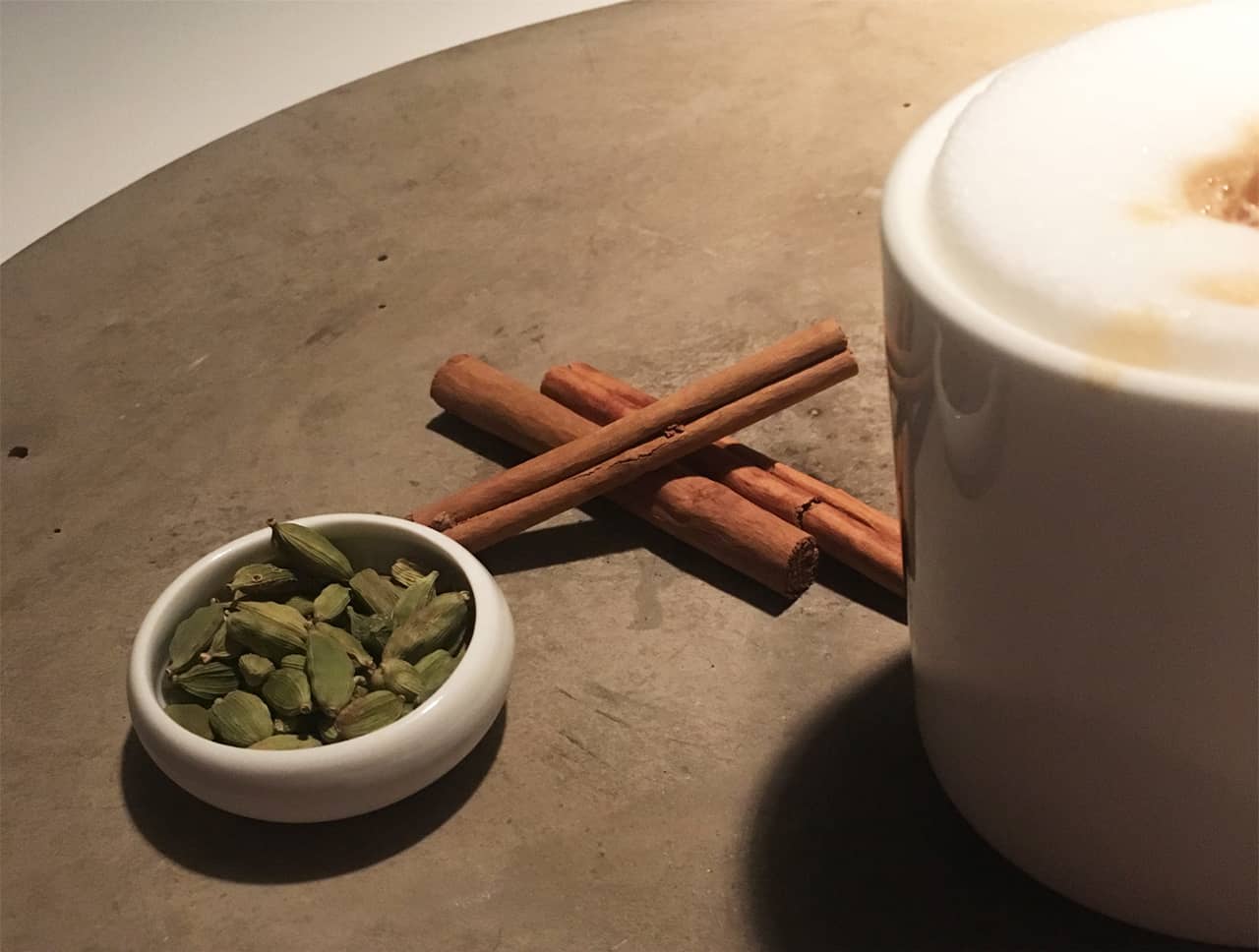- Coffee prep
Coffee syrup? Why it’s not good for you or your coffee.
Every time I see the look on the face of a barista whose coffee creation is drowned in syrup, I feel very sorry for the man or woman at the portafilter. Why do people love syrup in their coffee? A mystery to me – one that we want to get to the bottom of in this article.

Karsten Suhr
What exactly is coffee syrup?
Coffee syrup is one thing above all: Sweet! You can make it yourself, but most sweet-toothed people prefer to buy ready-made coffee syrup. And there are no limits to the flavors.
The most popular types of coffee syrup.
There are a number of flavors:
- The classic variants are mainly caramel, honey, vanilla, coconut, and cinnamon.
- The nutty ones cover hazelnut, pistachio, nougat, almond & co.
- The chocolate flavors are available with white chocolate, chocolate cookies, etc.
- The “fruity” ones are called Apple Pie, Blackberry, Banana, Strawberry.
- And the really wacky coffee flavor syrups are available in popcorn, peppermint, peanut butter, and the like.
And that’s probably the crux of the matter: With coffee syrup, a coffee no longer tastes like coffee. Some say that it would be more exotic, less boring. Hmm. Coffee has over 800 flavors, ranging from caramel to chocolate to citrus notes. I wouldn’t call that “boring”. But that’s just a question of high-quality coffee beans, optimal preparation (and a palate that isn’t sticky). More on this later.
What is coffee syrup made of?
The ingredients are actually simple: Water, sugar, flavorings. And that’s where it gets interesting. Even the so-called “natural flavors” are not said to be healthier or better than synthetic flavors. And above all, they don’t have to have anything to do with the actual flavor.
“European legislation provides for the claim ‘natural flavor’ in the case of a lack of correlation between the raw materials used and the perceived aroma or taste.” (translated from German)* It is therefore advisable to check carefully what is in the coffee syrup. And one thing is clear: just because it says “natural” doesn’t mean it’s “organic”.
With sugar? Or sugar-free?
When something is as sweet as coffee syrup, it also has a lot of calories on the clock. How many calories do you think 3.5oz of classic caramel syrup contain? A total of 323kcal!** And that’s only because of the sugar, as there is no fat in coffee syrup. Of course, sugar-free variants with sugar substitutes such as sucralose and acesulfame K are now also available on the market. However, there is much debate about the health risks of these ingredients. Ultimately, you have to decide for yourself whether you want this.
What alternatives are there to industrial coffee syrup?
First of all, the homemade one. Of course, with the DIY syrup version, you know exactly what’s in it. All you need to do is boil equal parts sugar and water and flavor with cinnamon, vanilla or similar. And you’re done.
But even with store-bought agave syrup, maple syrup, or honey in your cappuccino you are better off than having artificial flavors, colorings, or similar ingredients in your coffee – especially since these natural sweeteners are also available in organic versions.
However, if you’re not just looking for sweetness, but a different (complementary) flavor in your coffee, we recommend spices: Cinnamon, cardamom, vanilla, clove – there are no limits to your imagination. In some cases, you can also brew the espresso or coffee directly with the spices. Simply grind the spices (cardamom, cloves, chili or cocoa) finely and add 1 pinch (!) to the coffee powder, then pour over the coffee. You can also add a cinnamon stick or vanilla pod to the ground coffee for a few days. However, this would be more of a second choice for us, as we always grind the coffee fresh.
foto:
barbara beiertz

How much coffee syrup to you need?
It depends a little on the coffee drink. You can of course sweeten black coffee with syrup. But with milk (or a cow’s milk substitute), syrup definitely makes more sense, as the artificial flavors of the syrup go very well with the sweet milk flavors. The quantity is of course also a matter of taste, but most baristas recommend (with a weeping eye) around 0.7-1 fl oz of syrup for a latte macchiato. And for a normal cappuccino about 0.4-0.7fl oz of syrup.
It’s actually logical, but just to be on the safe side, I’ll mention it again: Only pour the coffee syrup into the coffee after brewing (don’t heat it!) and stir. Then the beauty of the latte macchiato is gone, but that’s exactly the problem: Why do we actually think that syrup doesn’t belong in coffee (no matter what drink)?
Why syrup is not good for your coffee.
Apart from all the things in coffee syrup that are not good for your health – a really good coffee, such as our Demeter coffee from Peru, has so many facets of flavors that it would be a sin to paste them with artificial vanilla or the like. Because then the great thing about coffee – its subtle notes, the refined acidity that so elegantly complements the aromas, that special something – is all gone.
We suspect that fans of the syrup have so far tended to go for lousy coffees that taste “too bitter, too burnt, too sour, too boring ”. A really good coffee, really well prepared – the right bean, perfect grind, optimum water temperature, adequate preparation – gets the hazelnut, caramel, and chocolate flavors all by itself.
As you can see, we tend to be coffee purists, but perhaps we can encourage you to try your coffee pure before you add anything to it next time. Take a look at our chapter “Flavors & Co.” to find out all the tricks and tips for an outrageously delicious coffee (without syrup).
Coffee syrup conclusion.
Perfect coffee does not need syrup. It needs very good coffee beans, optimum preparation, i.e. the right grind, and the right careful brewing method. Then it has plenty of flavors to offer and is anything but boring. You can’t turn a bad coffee into something tasty (to be honest, not even with syrup).
For the “sweet-toothed” among you: If you can’t do without coffee syrup (for whatever reason), make the syrup yourself. Or switch to organic products. It’s always better than artificial and “natural” flavors with lots of refined sugar.
Dare to do a coffee tasting and try to find out which flavors tickle, caress, and pamper your palate. Here you learn how to do it right: “Short introduction into cupping. Part 1”. It’s much easier than you think.
How convenient that our Mount Hagen espresso tasting package is on sale at the moment.
Sources:
*www.aromenverband.de/informationenleitlinien/kennzeichnung-natuerliches-aroma/
**Monin, Caramell-Sirup, Nährwertangabe



